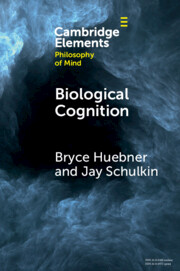Element contents
Biological Cognition
Published online by Cambridge University Press: 23 November 2022
Summary
- Type
- Element
- Information
- Series: Elements in Philosophy of MindOnline ISBN: 9781108982191Publisher: Cambridge University PressPrint publication: 22 December 2022
References
- 10
- Cited by



